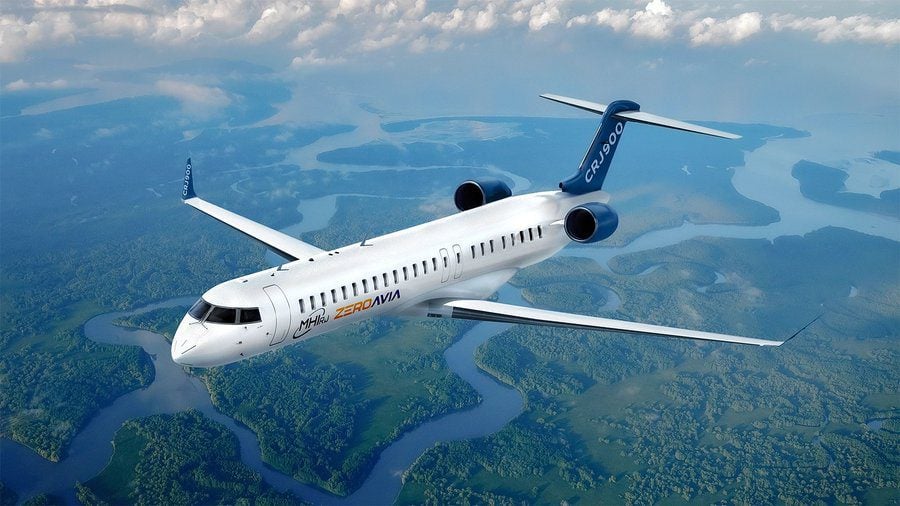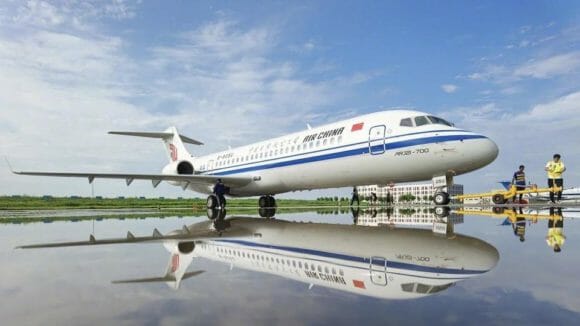
NVN56ZbY
ZeroAvia and Mitsubishi Heavy Industries RJ Aviation Group (MHIRJ) expanded their partnership on the development of hydrogen-powered regional aircraft. MHIRJ, which is the former Bombardier CRJ business unit now owned by the Japanese company, will offer more technical knowledge and support to ZeroAvia. ZeroAvia and MHIRJ expand partnership on CRJ.
In October 2021, the two companies announced a Memorandum of Understanding, in which MHI RJ would leverage the hydrogen fuel cell technology of ZeroAvia with Mitsubishi’s design, certification, and support experience. MHI RJ would offer engineering services for the installation of the hydrogen systems on both new aircraft and as a retrofit on existing Mitsubishi CRJ aircraft. This marked a wider presence of ZeroAvia in the regional jet market.
Exactly seven months after the MoU, the two companies announced an expanded agreement on May 25. “As part of the collaboration, MHIRJ’s Aerospace Engineering Center (AEC) will provide engineering services, aircraft integration, and its industry-renowned OEM experience to support the certification of ZeroAvia’s hydrogen-electric powertrain for retrofit onto airframes in the regional jet markets”, a media statement says.
CRJ to be a frontrunner in hydrogen operations
The enhanced agreement makes the CRJ the frontrunner in hydrogen operations, says ZeroAvia. “Over 2,000 CRJ Series aircraft have been built since the launch of the program, effectively establishing itself as the backbone of regional aviation in the United States.” ZeroAvia CEO Val Miftakhov called the new agreement “a giant step forward” in delivering hydrogen engines in the regional jet segment. In December, United Airlines announced an investment of $35 million in ZeroAvia, specifically to develop a hydrogen fuel cell system for use on its CRJ-550s from 2028.
For MHIRJ, the expanded agreement “furthers two important goals for MHIRJ. The first is to continue to grow our AEC business through working with other companies and using our vast engineering expertise to advance this state-of-the-art project. The second benefit is that we are part of the value chain in bringing innovative sustainable technology into the regional space”, Hiro Yamamoto said.
ZeroAvia continues the development of its fuel cell technology, which produces electricity to power electric motors. It is making progress with the ZA600, which is a 600 kW powertrain for smaller, 10-20 seater aircraft. A second Dornier Do-228 will be retrofitted to join the flight test program, which should lead to certification of the powertrain in 2024.
The bigger ZA2000 is to follow next and is to power 40-80 seat turboprop aircraft with its 2-5 mW powertrain. Alaska Airlines partnered with ZeroAvia last October on the development of a hydrogen-powered version of the De Havilland Canada Dash 8-400, in which the Canadian airframer itself is also directly involved. Entry into Service is scheduled for 2026.
The ZA2000RJ version of the powertrain is designed for use on regional jets in the late 2020s.
Views: 13


